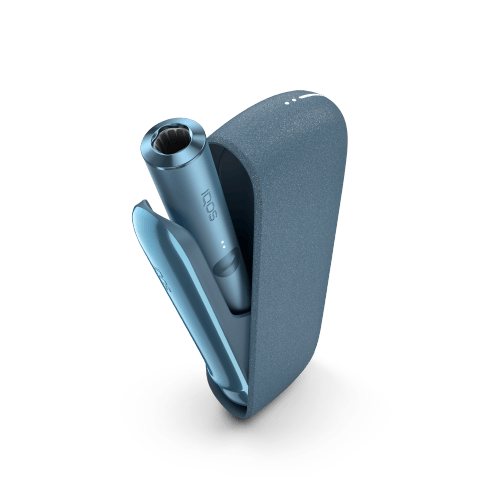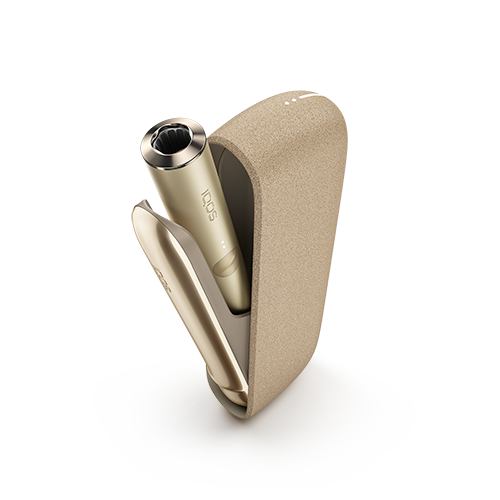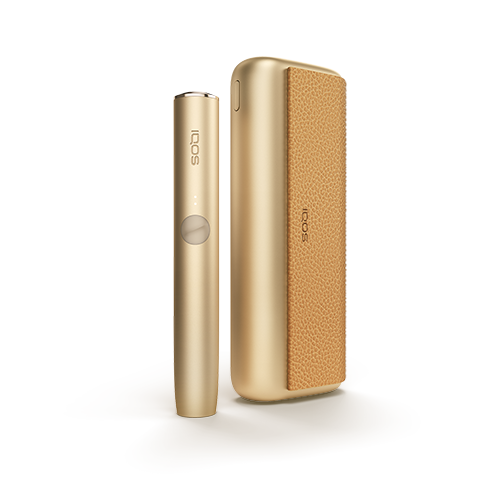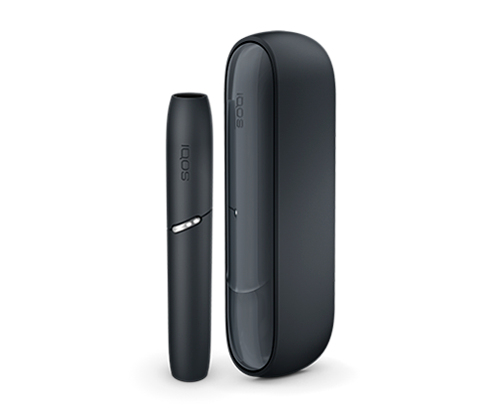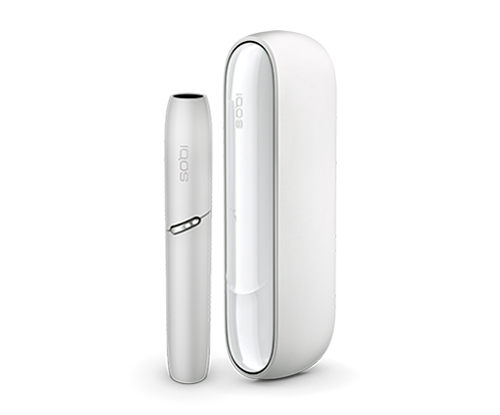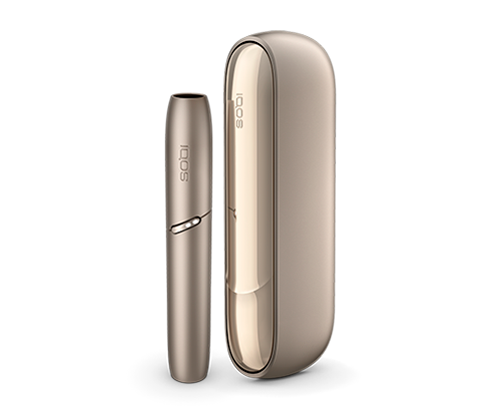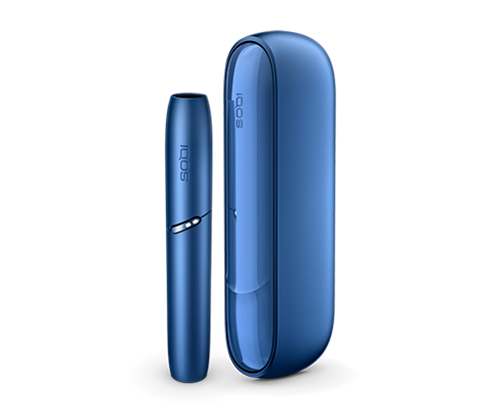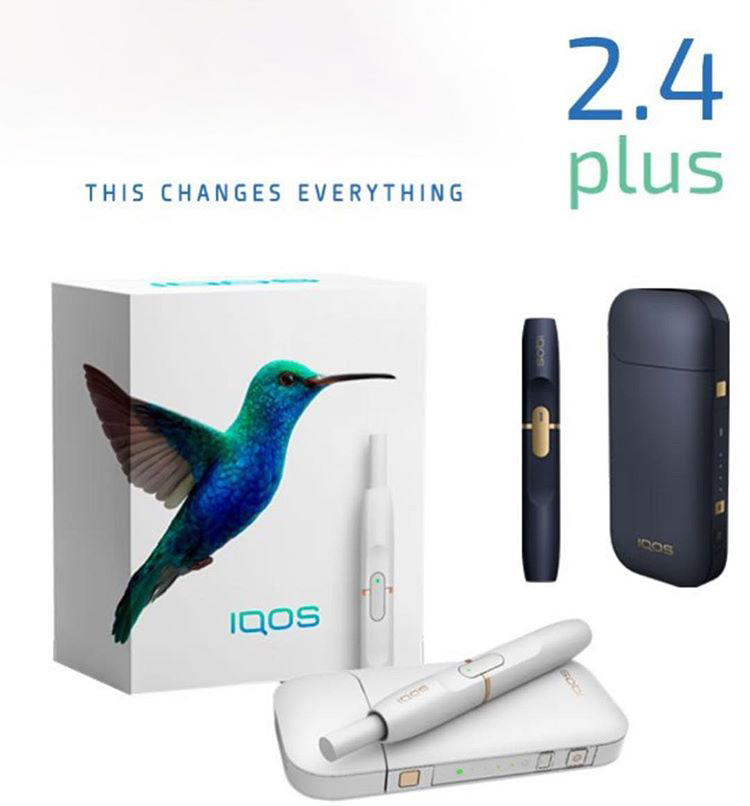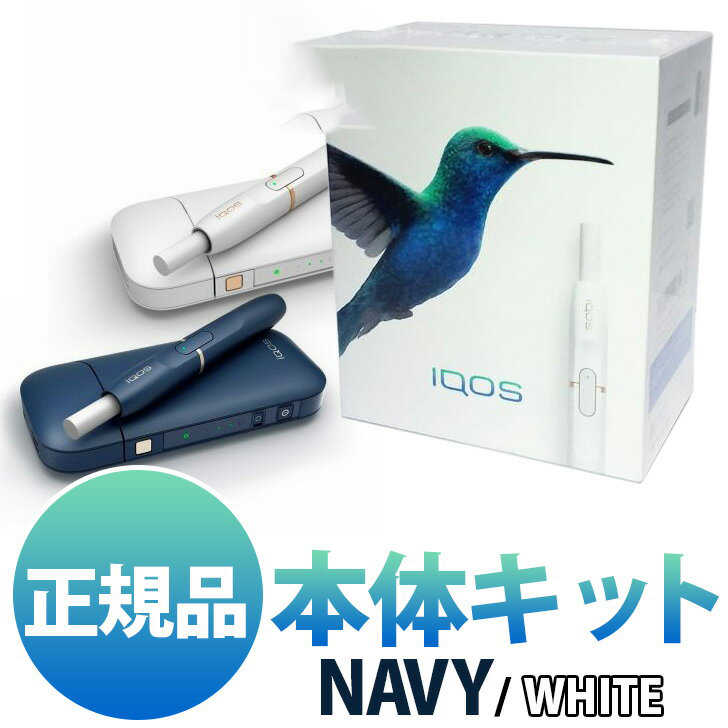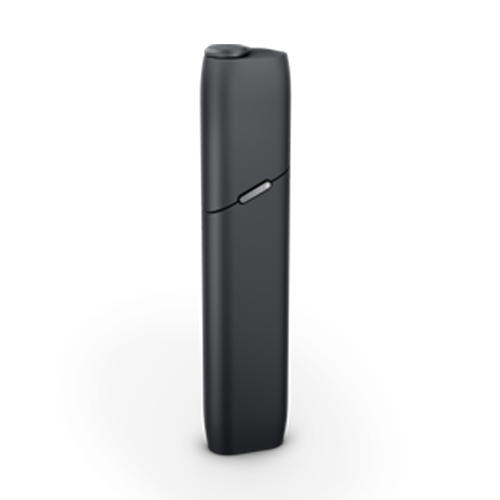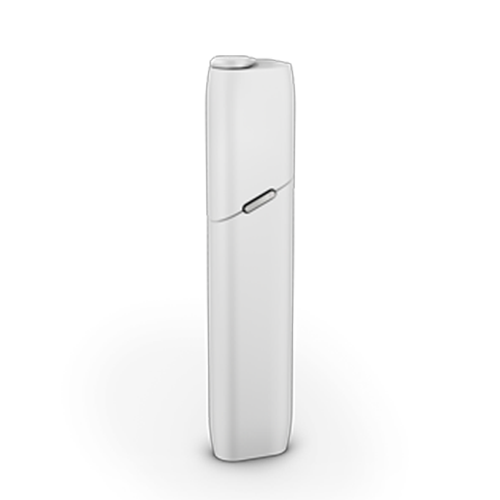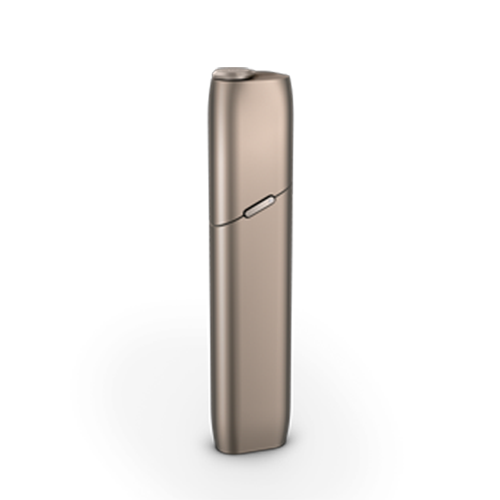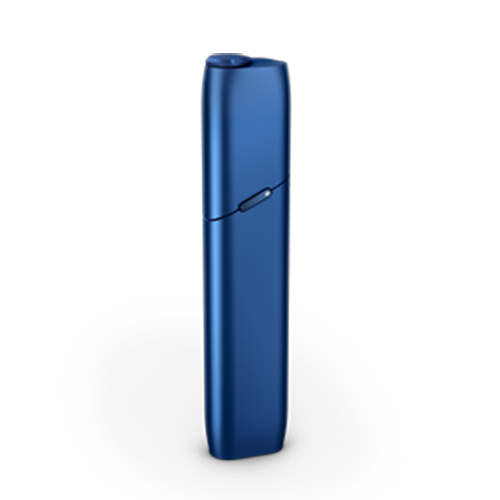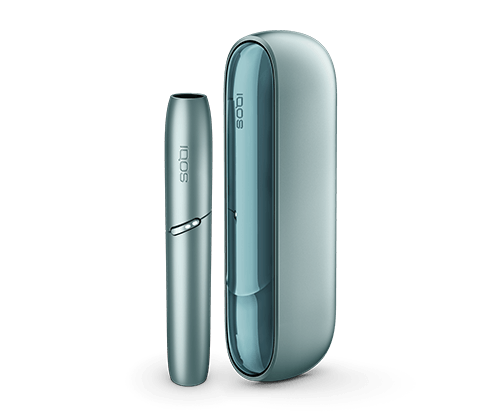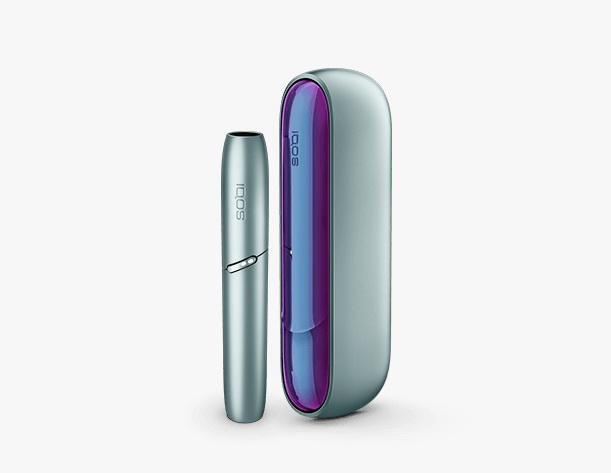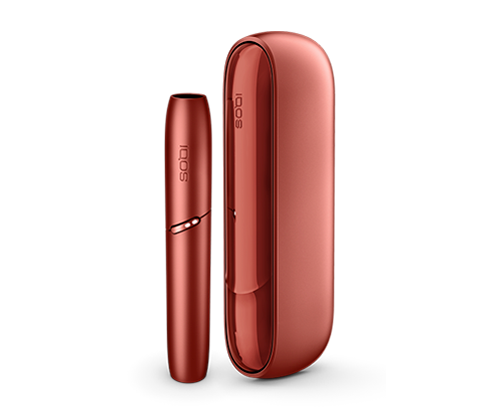2021版PMTA法规解读。
FDA于2021年1月27日发布PremarketTobacco Product Applications and Recordkeeping Requirements意见反馈版,相较于2020年9月25日发布的征询意见版,该版文件不仅对新型烟草产品PMTA认证提出了一些新的要求,同时也对各种反馈意见进行了回复或解释。
我们将文件中FDA针对各项意见的解释与回复做以整理,选取与电子烟相关的评论话题,逐一翻译,并且针对其中一些话题给出我们的解读,仅供业内朋友参考交流。每段问答我们都将文件的原文附于其后,如有歧义,请以原文为准。
评论一
很多评论要求FDA明确定义“commercially marketed(商业化上市的)”这个词的概念。其中,有评论认为FDA现有定义无法指导我们去评估一个产品是否属于“已在美国市场存在的烟草产品”。另有评论指出现有概念中包含一句话“在全美或是美国部分地区”,这句话看上去违背了“美国市场商业化”的法定概念,好像要求申请公司必须证明其产品在全美以及多个区域、甚至是跨州都有销售。评论还指出现有“新烟草产品”的法定定义没有陈述或表明在某一特定州销售不属于“在美国商业化上市的”。这些评论指出FDA应该将该词定义为“在美国通过广告方式销售给任何个人或个体,或是通过其它交流沟通手段传播该烟草产品可供购买的信息”。另外一些评论表达了类似的顾虑,声明现有定义似乎严格要求产品必须是直接卖给消费者的,而且产品必须在全美都有销售。
FDA回复
针对以上这些评论,我们不认为“商业化上市”是一个粗浅的定义。相反,我们增加了一个针对“商业化上市”的表述,现在的定义是:“在美国直接售卖或兜售烟草产品给消费者或提供给任何第三方个体最终售卖给消费者”。该定义澄清了那些不属于“商业化上市的”烟草产品,比如仅仅是为了出口而售卖的烟草产品。还有比如,仅供调查研究的或是免费样品的,都不属于“商业化上市的”烟草产品。“商业化上市的”烟草产品归档文件请参考法案§ 1100.204(a),需包括:带日期的提货单、带日期的运单、带日期的发票、带日期的订单、带日期的广告、带日期的产品目录、带日期的推广材料、带日期的商业贸易出版物、带日期的生产制造资料、库存单、或是其它任何文件能证明该产品是在2007年2月15日之前就在美国“商业化上市的”。
咨源解读
烟草产品在美国上市有三条途径:PMTA,SE和SE豁免。而后两种途径的前提是要有“商业化上市的”产品作为基准参考对照。所以,FDA想借此再次明确一下,什么样的商品才能称之为“商业化上市的”。同时,这个定义也关系着我们常说的“2016年8月8日之前上市的产品”这个关键概念。大家都知道,FDA对于2020年9月9日之前提交PMTA申请的基本要求是:你的产品必须是在2016年8月8日之前就已在美国“上市的商业化的”,所以,很多中国电子烟企业便已提前布局,在2016年8月8日之前发送了大量的产品或样品到美国,只为抢在这个时间点前为后面的PMTA提交垫定基础。那么,通过FDA上面的回复,我们可以看到,仅为出口而做的发货,或仅作为调研样品而做的产品不算是“商业化上市的”产品。同时,如果要证明你的产品是“商业化上市的”,还需提供上述那些材料和证明。虽然,FDA并未提及2016年8月8日之前的这个说法,但咨源建议第一轮提交的企业不要轻视,请尽量按上面的要求准备市场材料,以备万全!
法规原文
Comment 1:
Severalcomments discussed specific changes to the proposed definition of the term“commercially marketed.” One comment stated that the proposed definition ofcommercially marketed departs from the plain meaning of the statutory languageand FDA’s historical approach to evaluating whether a product is a Pre-ExistingTobacco Product.
Specifically,comments raised concerns that inclusion of “in all or in parts of the UnitedStates” seems to depart from the plain meaning of the statutory phrase “commerciallymarketed in the United States” and requires that firms demonstrate that aproduct was offered nationwide, in multiple regions, or even across Statelines. The comments also argue that, for example, the statutory definition of“new tobacco product” does not state or imply that a product offered for salewithin a particular State cannot qualify as “commercially marketed in theUnited States.” The comments state that FDA should define “commerciallymarketed” as “offered for sale in the United States to any individual or entityby advertising or by any other manner used to communicate that the tobaccoproduct is available for purchase.” Another comment expressed similar concerns,stating that the definition seems to require the selling or marketing ofproducts directly to consumers as well as offering it for sale nationwide.
FDA Response 1:
Afterreviewing the comments related to commercially marketed, we have added adefinition of this term to the final rule, which reflects the input wereceived. Given the wide variety of input we have received on this term as wellas the dictionary definition, we do not believe that the term “commerciallymarketed” has a plain meaning. Instead, we have added a definition stating that“commercially marketed” means selling or offering for sale a tobacco product inthe United States to consumers or to any person for the eventual purchase byconsumers in the United States. This definition clarifies that tobacco productsthat are not sold or offered for sale in order to reach consumers within theUnited States, such as tobacco products sold solely for export, fall outside ofthe definition of commercial marketing. Examples of products that may not becovered by the definition of commercially marketed include investigationaltobacco products and free samples. Examples of documentation of commercialmarketing may include the following items listed in § 1100.204(a): dated billsof lading, dated freight bills, dated waybills, dated invoices, dated purchaseorders, dated advertisements, dated catalog pages, dated promotional material,dated trade publications, dated manufacturing documents, inventory lists, orany other document demonstrating that the product was commercially marketed inthe United States as of February 15, 2007.
评论二
有反馈要求FDA澄清一下“限量版产品”是属于“试销产品”还是“商业化上市的”产品。
FDA回复
如果“限量版”产品是在美国直接售卖给消费者,或者是通过第三方个人个体最终售卖给消费者的,即使其售卖渠道是试销市场,该产品仍属于“商业化上市的”产品。因此,如果有“限量版”产品于2007年2月15日前即在美国市场商业化销售(即便是通过试销渠道),该产品属于已存在的烟草产品而非新烟草产品。我们注意到将试销市场上的产品认定为“商业化上市的”产品是对FD&C法案910(a)(1)(A)章节内容的一个变通,将在接下来的问答3中做更多讨论。但是,如果一个产品在2007年2月15日的时候仅仅存在于试销市场,根据FD&C法案905(j)章节内容,该产品是不能作为新烟草产品同质等效申请(SE)的基准对照产品的(Predicate Products)。试销市场的产品是指用来收集消费者数据从而确定商业市场可行性的产品。
法规原文
Comment 2:
One commentrequested clarification as to whether limited edition products would beconsidered test marketed products or commercially marketed products.
FDA Response 2:
“Limitededition” products are considered commercially marketed if they were sold oroffered for sale in the United States to consumers or to any person for theeventual purchase by consumers in the United States--regardless of whether theywere solely sold or offered for sale in a test market. Therefore, if a “limitededition” product was commercially marketed--even if only in a test market--as ofFebruary 15, 2007, it would be a Pre-Existing Tobacco Product. We note thatconsidering test marketed products to be commercially marketed is a change inFDA’s interpretation of section 910(a)(1)(A) of the FD&C Act, which isdiscussed further in the response to comment 3. However, a product that wassolely in a test market as of February 15, 2007, cannot serve as a predicateproduct under section 905(j) of the FD&C Act.
Test marketedproducts may include, for example, products that were sold or offered for saleto determine the commercial viability of a product through the collection ofconsumer reaction data.
评论三
有许多评论都在关注讨论FDA草案中相关词条的定义,比如“商业化上市的”、“试销市场”、“已存在的烟草产品”、和“新烟草产品”。有一些评论争论道国会是有意针对新烟草产品使用试销市场这个概念,如此,根据FD&C法案,那些在2007年2月15日存在于美国试销市场的产品(非910(a)(1)(B)章节定义修改的产品)则不属于新烟草产品而且不需要通过上市前审核。这些评论还指出由于FD&C法案里的905(j)(1)(A)(i)章节明确地将试销市场的产品排除在商业市场产品之外,不能作为同质等效(SE)申请通道的基准对照产品(Predicate Products),即证实了“商业化市场”包含了试销市场的产品(也就是说,如果试销市场的产品本来就不构成商业化上市产品,那么国会就没必要再次强调要将试销市场的产品排除在商业化市场产品之外,且不可以作为同质等效申请通道的基准对照产品了)。有些评论要求FDA包含在草案中出现的有关于“新烟草产品”(21 CFR part 1114)的相关定义,另外一些评论确认为由于草案中的这些定义没有必要、不清楚、自相矛盾、而且没有意义。有评论特别提出FDA没有有效合理的区分“试销市场”和“商业化上市”,而且草案中的定义没有体现工业界的实际情况。
FDA回复
在审阅完这些评论之后,我们修订了与“已存在的烟草产品”相关的定义,删除了与“完全排除”试销市场的相关表述。我们重新分析了FD&C法案中的910(a)(1)(A)章节,赞同有关评论所说的在2007年2月15日存在于美国试销市场的烟草产品不属于新烟草产品。910(a)(1)(A)章节定义“新烟草产品”包含“任何2007年2月15日不存在于美国商业市场的任何烟草产品(包括试销市场的产品)”。这其中增加的“包括试销市场的产品”就是为了说明即使是试销市场的烟草产品,其与商业市场的烟草产品一样,只要它们在2007年2月15日存在于美国市场则都不属于“新烟草产品”。
在审阅完所有评论后,我们同意针对试销市场还需要更多的考虑来准确定义其范围,所以在新法规中我们不会给予其最终的定义。同时针对“预先存在的烟草产品”,我们对其最终的定义做了以下修改:首先增加了“包括那些存在于试销市场的产品”;其次删除了“不包括那些仅仅存在于试销市场的产品”。总的来说FDA将2007年2月15日存在于试销市场的烟草产品也纳入到了预先存在的烟草产品范围内,均不需要进行PMTA申请。
法规原文
Comment 3:
Multiplecomments discussed the proposed definition of the term “commercially marketed”as well as the definition of the term “test marketing” set forth in thepreamble of the proposed rule as used in, or to inform, the definitions of“Pre-Existing Tobacco Product” and “new tobacco product” in the proposed rule.Some comments argued that Congress was intentional in its use of test marketsin the definition of new tobacco product and, as such, a product in test marketas of February 15, 2007 (if not subsequently modified within the meaning ofsection 910(a)(1)(B)), of the FD&C Act is not a new tobacco product and is notsubject to premarket review. These comments also stated that because section905(j)(1)(A)(i) of the FD&C Act explicitly excludes test marketed productsfrom the commercially marketed products that may serve as valid predicateproducts, it demonstrates that the term “commercially marketed” encompassesproducts that are test marketed (i.e., if test marketed products did notconstitute commercially marketed products, there would have been no need forCongress to exclude them from the types of commercially marketed products thatmay qualify for use as predicate products under the substantial equivalencepremarket pathway). Some comments requested FDA include the definitions as theywere defined in the proposed rule, including as they relate to the definitionof the term “new tobacco product” in proposed part 1114 (21 CFR part 1114).Other comments stated that the proposed definitions should not be included inthe final rule because they are unnecessary, confusing, conflicting, and notuseful. Specifically, some comments argued that FDA did not provide a workableor rational basis to distinguish “test marketing” from “commercially marketed”and the proposed definitions do not reflect industry realities.
FDA Response 3:
Following ourconsideration of these comments, we have revised the definitions related to“Pre-Existing Tobacco Product” to remove language related to “exclusively” testmarketed.
Upon reviewingcomments received, we reassessed our interpretation of section 910(a)(1)(A) ofthe FD&C Act, and we agree with the comment indicating that a tobaccoproduct test marketed in the United States as of February 15, 2007, is not anew tobacco product. Section 910(a)(1)(A) defines a “new tobacco product” toinclude “any tobacco product (including those in test markets) that was notcommercially marketed in the United States as of February 15, 2007.” Theparenthetical “including those in test markets” in section 910(a)(1)(A) of theFD&C Act modifies the phrase directly before it--“any tobacco product”--andis intended to clarify that tobacco products commercially marketed in testmarkets in the United States as of February 15, 2007, should be treated thesame way as any other tobacco product that was commercially marketed as ofFebruary 15, 2007, i.e., they are not “new tobacco products.” We also agreethat section 905 of the FD&C Act provides additional context that supportsthis interpretation.
Section905(j)(1)(A)(i) of the FD&C Act describes products that can serve as validpredicate tobacco products: a tobacco product commercially marketed (other thanfor test marketing) in the United States as of February 15, 2007, or a tobaccoproduct that the Secretary by delegation to FDA has previously determined,pursuant to section 910(a)(3), is substantially equivalent.
Here,Congress’ inclusion of the parenthetical “(other than for test marketing)”supports a reading of the term “commercially marketed” as including productsthat were test marketed; otherwise, there would not be the need to specificallycarve out test marketed products from the commercially marketed products thatcan serve as valid predicate products.
In addition,in the preamble to the proposed rule, we explained that FDA was consideringwhether to add the following definition of test marketing: “test marketing”means distributing or offering for sale (which may be shown by advertisements,etc.) a tobacco product in the United States for the purpose of determiningconsumer response or other consumer reaction to the tobacco product, with or withoutthe user knowing it is a test product, in which any of the following criteriaapply: (1) offered in a limited number of regions; (2) offered for a limitedtime; or (3) offered to a chosen set of the population or specific demographicgroup (84 FR 50566 at 50571).
We agree withthe commenter that further discussion of the term, test marketing, is needed tomore accurately capture the scope of this term; accordingly, we are notincluding a definition of test marketing in the final rule.
After reviewingthese comments and for the purposes of consistency, FDA is finalizing thedefinition of “Pre-Existing Tobacco Product” with changes to better align withthe statute, first, by adding “(including those products in test markets), and,second, by removing “and does not include a tobacco product exclusively in testmarkets as of that date.” Specifically, FDA defines a “Pre-Existing TobaccoProduct” to mean a tobacco product (including those products in test markets)that was commercially marketed in the United States as of February 15, 2007.The definition of “Pre-Existing Tobacco Product” in this rule reflects FDA’sinterpretation that “as of” means “on”, which has been included as part ofpreviously issued regulations and guidance.6 For more information on thistopic, see the response to comment 5 explaining FDA’s interpretation that “asof” means “on.” A Pre-Existing Tobacco Product is not subject to the premarketreview requirements of section 910 of the FD&C Act.
评论五
有很多评论质疑FDA对2007年2月15日这个时间点的措辞,FDA使用了“在或是之前在2007年2月15日”而非“在2007年2月15日”。如此,任何一款烟草产品只要其在2007年2月15日当天或之前任何时候出现在美国市场都能被认定为预先存在的烟草产品了。
FDA的回复
我们不同意评论所说的措辞有问题,根据各大权威辞典的释义,“as of”的定义并不是向评论所说的仅有“在或是之前在”简单的定义。如果如评论所理解的,那么那些曾经在2007年2月15日出现在美国市场但被淘汰或放弃的烟草产品就可以不受PMTA影响并可直接作为同质等效的基准产品了!我们有理由相信国会是不可能任由这类产品钻空子不受PMTA约束的,所以我们不接受评论对于我们措辞含义的解释。
法规原文
Comment 5:
Multiplecomments questioned FDA’s interpretation of the phrase “as of February 15,2007” as used in the definition of the terms “Pre-Existing Tobacco Product” and“new tobacco product” and stated that there is a lack of rationale for itsinterpretation.
Comments arguethat the plain meaning of the term “as of” support the interpretation that “asof” means “on or before” rather than “on”. As such, a tobacco product mustqualify as a Pre- Existing Tobacco Product if it was commercially marketed inthe United States at any time on or before February 15, 2007.
FDA Response 5:
As previouslystated, FDA’s longstanding interpretation is that the statutory phrase “as ofFebruary 15, 2007,” means that the tobacco product was commercially marketed inthe United States “on February 15, 2007” (see the final guidance entitled“Establishing That a Tobacco Product Was Commercially Marketed in the UnitedStates as of February 15, 2007” (79 FR 58358, September 29, 2014)). Contrary tothe comments, the term “as of” does not have a clear plain meaning. Thedictionary definitions of “as of” include: “on; at” (Webster’s II New RiversideUniversity Dictionary, 1988); “beginning on; on and after” (Webster’sUnabridged Dictionary Random House 1997); “from, at, or until a given time”(The American Heritage Dictionary of Idioms 2003); “on, at, from--used toindicate a time or date at which something begins or ends” (Merriam Webster’sOnline Dictionary). As evidenced from these varying definitions (e.g., compare“until” with “from”), the term is ambiguous. Even assuming “as of” could beinterpreted as “at any time prior to and not necessarily including on theparticular date” (in short referred to as the “on or before” interpretation),interpreting “as of” to mean “on” gives a firm line of demarcation thatprovides clarity. Additionally, reading “as of” to mean “on or before” wouldmean that obsolete, abandoned, or discontinued tobacco products could return tothe market without any premarket review and could serve as predicates under theSE provision. It is reasonable to conclude that Congress did not intend toallow an immeasurable number of obsolete, abandoned, or discontinued productsthat were marketed before February 15, 2007, to return to the market withoutany premarket review or serve as predicates under the SE provision, but ratherintended to confine this number to those products that were commerciallymarketed in the United States on February 15, 2007. Thus, we decline to adoptthe interpretation the comments suggest.
评论六
有一个评论指出“新烟草产品”中“共同包装”这一用语很不清楚,而且也没有提出相应的针对共同包装产品的管控手段。
FDA的回复
我们会根据不同厂家“共同包装”的烟草产品做相应评估来确认其是否需要经过上市前审核。如果该“共同包装”产品所做的改变会影响使用、组成成分、或是产品特性,则该产品为新型烟草产品而且必须要经过上市前审核;反之则不需要。相关内容可参考910(a)(1)(B)法案中对于新烟草产品的解释。另外,如果上市前审核资料中仅仅只有产品的一部分(比如一根香烟而不是一包成品香烟),则FDA无法评估该产品上市后的使用影响。
咨源解读
共同包装这个定义对于我们国内的电子烟企业还是值得关注的,比如,某公司已提交了一个开放式,并通过了PMTA,后来,该公司与一家已通过PMTA的烟油厂家合作,并将其通过PMTA的烟油放在一起进行再包装,实现捆绑销售,当这种情况发生,按上述讨论,理论上是不需要再进行PMTA的,但如果你的开放式以前的数据是用尼古丁盐做的,而这个共同包装中的烟油是FreeBase的,那么恐怕还是需要进行PMTA的,只是所补充的试验多少而已。这个肯定是个案个办的。
法规原文
Comment 6:
One commentstated that the term “co-packaging,” which is included in the discussion of thedefinition of the term “new tobacco product,” is confusing and does not providea basis for regulating co-packaged products as part of premarket review.
FDA Response 6:
Manufacturerssometimes co-package tobacco products, and FDA seeks to clarify what effectco-packaging tobacco products may have on whether those products are requiredto undergo premarket review. If there has been a change to the packaging of co-packaged tobacco products that is intended or reasonably expected to affect oralter the performance, composition, constituents, or characteristics of thetobacco product, then it is a change to the container closure system and,therefore, is a new tobacco product. Under section 910(a)(1)(B) of the FD&CAct, new tobacco products include those that are new because they have beenrendered new through any modification (including a change in design, anycomponent, any part, or any constituent, including a smoke constituent, or inthe content, delivery or form of nicotine, or any other additive or ingredient)of a tobacco product where the modified product was commercially marketed inthe United States after February 15, 2007.
Therefore, iftwo or more products are co-packaged together within a container closuresystem, it results in a new tobacco product requiring premarket authorization.However, co-packaging two or more legally marketed tobacco products, wherethere are no changes, including no change to the container closure system(s),does not result in a new tobacco product.
In addition,for purposes of determining whether a tobacco product is new under section 910of the FD&C Act, and therefore requires premarket authorization prior tomarketing, a “tobacco product” encompasses the whole product (e.g., a pack ofcigarettes or a tin of loose tobacco), and is not limited to a single unit orportion of the whole product (e.g., a single cigarette or a single snus pouch).See Philip Morris USA Inc. v. U.S. Food & Drug Admin., 202 F. Supp. 3d 31,55-57 (D.D.C. 2016). If a premarket application includes information on only aportion of a new tobacco product, FDA would have an incomplete understanding ofthe tobacco product (e.g., FDA may not get information on the container closuresystem, which could impact the consumable product) and would not be able todetermine, for example, potential impacts on initiation and cessation oftobacco.
评论七
有许多评论要求FDA修改对于不良体验的涵盖内容范围。有一个评论要求FDA增加“导致更多青少年或年轻成年人使用”,另一个评论指出现有不良体验的定义太过宽泛主观,应该更加具体的说明使用或暴露在烟草产品时的相应健康影响事件。
FDA的回复
我们不同意对现有不良体验的定义做出修改,该定义被广泛使用在FDA其它管辖的领域,目的在于广泛收集所有与FDA管控产品相关的健康影响信息。另外我们不同意增加青少年或是年轻成年人使用这一内容,因为这一内容属于使用行为习惯,而非健康影响。对于合法年龄以下人员的使用情况是通过§ 1114.41中指出的定期汇报审核来管控的。
FDA有注意到不良体验囊括烟草产品使用过程对于非使用者本身的健康影响的重要性,由此FDA可以确定该产品对于非烟民的影响,比如二手烟暴露、偶然的暴露。如此,对于申请者来说,上报所有烟草产品使用过程中可能造成的不良体验,即使是短暂的影响,可以向FDA表明他们避免了主观的偏见性,同时可帮助FDA识别那些不明显的不良体验。
法规原文
Comment 7:
Multiplecomments requested changes to the definition of what constitutes an adverseexperience. One comment requested FDA amend the definition to explicitlyinclude increased use by youth or young adults. Another comment stated that thedefinition of adverse experience is too broad and subjective, and should berevised to refer to a health-related event associated with the use of orexposure to (intended or incidental) a tobacco product.
FDA Response 7:
FDA declinesto change the definition of adverse experience because this widely understooddefinition is generally consistent with language used throughout the Agency andis designed to capture a broad swath of information related to health effectsfrom FDA regulated products. Due to the fact that the experience may not relateto the individual user but could also affect the general public or bystander,it is FDA’s intent that the definition remain broad to ensure we receive the potentialwide variety of voluntary reports of adverse experiences involving tobaccoproducts from investigators, consumers, healthcare professionals and concernedmembers of the public. Additionally, FDA declines to revise the definition toinclude use by youth and young adults because it constitutes a behavior, not ahealth effect related to an adverse experience. Increases in use by individualsunder the minimum age of sale will be monitored through the review of periodicreports submitted under § 1114.41, among other means.
FDA notes thatit is important to also include information regarding adverse experiencesassociated with use of or exposure to a product where the individual sufferingthe adverse experience did not use the product because it can help FDAdetermine health risks for nonusers, such as the effects of second-handexposure or accidental exposure (e.g., skin burns from accidental exposure toliquid nicotine, harmful effects resulting from a child drinking an e-liquid,respiratory difficulties from second-hand exposure to an e-cigarette).Additionally, reporting information regarding all adverse experiences that aretemporally associated with the use of or exposure to the product will help theapplicant avoid self-selection bias of what is reported to FDA and helpidentify harmful effects that are not obviously attributable to the product.
评论八
有一些评论建议FDA对于一些定义进行修改,比如“容器封闭系统”、“包装”、和“部件或部分”。评论要求“容器封闭系统”定义中的产品包装仅仅限于那些会影响到产品特性的包装,评论争论到新型烟草品只适用于对于产品本身物理性质的改变,而不是包装或是商标等信息系的变化。总的来说,这些评论认为只有那些做了影响到产品本身使用特性的改变才能被认定为是新型烟草产品,那些仅仅是将产品装起来而非改变产品使用特性的应该被认定为包装,而不是“容器封闭系统”。
FDA的回复
正如法规中FDA对于“部件或部分”的定义所说,任何可能(1)改变或影响烟草产品的使用、组成成分、特性;或(2)与烟草产品共同使用或提供给人员消费使用烟草产品的软件或组成材料都被认定为“部件或部分”。我们不同意评论中所说的包装仅仅是包装而不属于烟草部分的说法。很多例子都说明包装会影响到产品的使用,比如香烟包装对于产品湿度的影响,包装材料成分渗入到产品中的影响等等。
将这类包装归类到“部件或部分”与FD&C法案中的内容一致,而且能够长远的影响控烟法案对于群体健康的保护。如果将这类包装排除在烟草产品的“部件或部分”之外,将会影响到FDA评估烟草产品的上市是否能保护群体健康。故此我们不同意这类评论的说法。
咨源解读
我们对包装的考查至少应要包括三个方面:1. 功能性考查:是否对产品起到了保护的作用(避光,防湿,防破坏等);2. 安全性和相容性:是否会对产品产生潜在的伤害(生物反应,提取物等);以及3. 是否具有市场宣传,产品追溯及警示的作用。因此,包装可以被称之为系统而存在于产品体系当中,值得我们所有企业去重视,我们也相信FDA会颁布更为具体的针对包装,说明书等内容的法规和要求。
法规原文
Comment 8:
A few commentssuggested related revisions to both the definitions of the terms “containerclosure system” (CCS), “packaging,” and “component or part,” as well as whatmodifications to a CCS FDA considers to result in a new tobacco product. Thecomments requested that the definition of CCS be limited to only the productpackaging that is designed or reasonably expected to alter the productcharacteristics after the time of manufacture. Comments stated that failure tomake such a change would be inconsistent with the court’s decision in PhilipMorris v. FDA, 202 F. Supp. 3d 31, 51 (D.D.C. 2016). Citing this case, which inthe course of distinguishing between a product and its labeling, referenced“the physical attributes of the product itself, as distinct from its label orthe package in which it is contained,” the comments argue that the law’srequirements for new tobacco products apply only when there are changes in “thephysical attributes of a tobacco product--not its labeling or packaging.” Id.
Likewise, thecomments stated that modifications to the CCS should result in a new tobaccoproduct only if modifications are intended or reasonably expected to alter thecharacteristics of the product. The comments maintained that if the packaging’spurpose is merely to maintain or preserve the characteristics of the product,it should only be considered packaging, not a CCS.
FDA Response 8:
As describedin the rule, FDA defines “component or part” as any software or assembly ofmaterials intended or reasonably expected: (1) to alter or affect the tobaccoproduct's performance, composition, constituents, or characteristics or (2) tobe used with or for the human consumption of a tobacco product. Contrary to thecommenter’s assertion, packaging that constitutes the container closure systemis intended or reasonably expected to affect or alter the performance,composition, constituents, or characteristics of the tobacco product (e.g.,leaching substances that are then incorporated into a tobacco product), and isthus a component or part of a tobacco product. This is consistent with theholding of Philip Morris, 202 F. Supp. at 51, as is its converse: Packaging thatis not the container closure system and is not intended or reasonably expectedto affect or alter the performance, composition, constituents, orcharacteristics of the tobacco product is, therefore, not a component or partof a tobacco product. As such, packaging that is, for example, the packagingaround a blister pack is not part of the PMTA review process if it is notintended or reasonably expected to alter or affect the performance,composition, constituents, or characteristics of the tobacco product within theblister pack. However, where a change in the container closure system couldaffect the chemistry of the product, FDA requires the applicant, where itsubmits a PMTA, to demonstrate that permitting marketing of the product withthe change in the container closure system is appropriate for the protection ofpublic health.
For example,packaging materials constitute a container closure system if substances withinthat packaging are intended or reasonably expected to affect product moisture,e.g., when the manufacturer changes the package of a moist snuff from plasticto fiberboard, which can affect microbial stability and tobacco-specificnitrosamine (TSNA) formation during storage.
Anotherexample of this is when menthol or other ingredients are applied to the innerfoil to become incorporated into the consumed product (Ref. 1). Packagingmaterials may also be intended or reasonably expected to affect thecharacteristics of a tobacco product by impacting the rate of leaching into,and ultimately, the amount of substances found in, the consumable tobaccoproduct. In fact, it has been demonstrated that compounds in packagingmaterials may diffuse into snuff and affect its characteristics (Ref. 2). Thus,packaging material that affects the characteristics of a tobacco product byimpacting the moisture level or shelf life of a tobacco product is a containerclosure system (e.g., a plastic versus a metal container of smokeless tobacco).A difference in tobacco moisture is reasonably expected to affect microbialgrowth in the product, extraction efficiency, and total exposure to nicotine orthe carcinogens N- nitrosonornicotine (NNN) or4-(methylnitrosamino)-1-(3-pyridyl)-1-butanone (NNK) (Ref. 3).
Considering adistinct subset of packaging (i.e., container closure system) to be a componentor part is consistent with the FD&C Act and furthers the fundamentalpurpose of the Tobacco Control Act to protect the public health. For example,section 900(1) of the FD&C Act defines an “additive” as any substance the intendeduse of which results or may reasonably be expected to result, directly orindirectly, in its becoming a component or otherwise affecting thecharacteristic of any tobacco product (including any substance intended for useas a flavoring or coloring or in producing, manufacturing, packing, processing,preparing, treating, packaging, transporting, or holding), except that suchterm does not include tobacco or a pesticide chemical residue in or on rawtobacco or a pesticide chemical. Congress specifically included a broaddefinition of “additive” that encompasses not just substances that do in facthave such effects but also those that may reasonably be expected to have sucheffects. Similarly, if FDA were to adopt a narrow construction of “tobacco product”to exclude these materials, the Agency's ability to evaluate whether permittingthe marketing of the new tobacco product was appropriate for the protection ofpublic health (APPH) would be impeded, thereby leaving the Agency unable tofully execute its mission to protect the public health. The definition of“package” in section 900(13) of the FD&C Act does not dictate a contraryresult and can be reasonably interpreted to mean that a distinct subset ofpackaging is also a component or part of a tobacco product.
评论10
一个评论声明“烟草产品成品”定义应该遵从于注册指导文件中使用的定义,即包含“为消费者使用”这一内容。
FDA的回复
我们有重新编撰“烟草产品成品”定义,我们增加了“或是为了售卖给消费者的最终形态”来更加清晰的定义什么是“成品”。
咨源解读
通常我们认为哪怕只是一个烟弹或某一个雾化芯,只要其经过包装,并以此为最终形态呈现在消费者面前,那么它将被视为烟草产品成品,按PMTA相应的法规进行管制。
咨源解读
Comment 10:
One commentstated that the definition of the term “finished tobacco product” shouldconform to the definition previously used in the registration and listingguidance, which included the phrase “intended for consumer use.”
FDA Response 10:
FDA has editedthe definition of the term “finished tobacco product” to include the phrase “orin the final form in which it is intended to be sold to consumers” to helpclarify the meaning of the term “finished.” We believe that by includingproducts sold in the final form in which it is intended to be sold toconsumers, we are capturing a variety of products including those intended forconsumer use as requested by the commenter.
本文转自公众号:咨源科技PMTA

